CS vs 750a - The Grand Finale
The end is almost nigh. On October 20th 2015 we found ourselves with a Cross Slot and a John Deere 750a in the same field, at the same time, drilling the same crop at the same seed rate. What better start for a test that had been much debated amongst all the saddo internet farmers (myself included).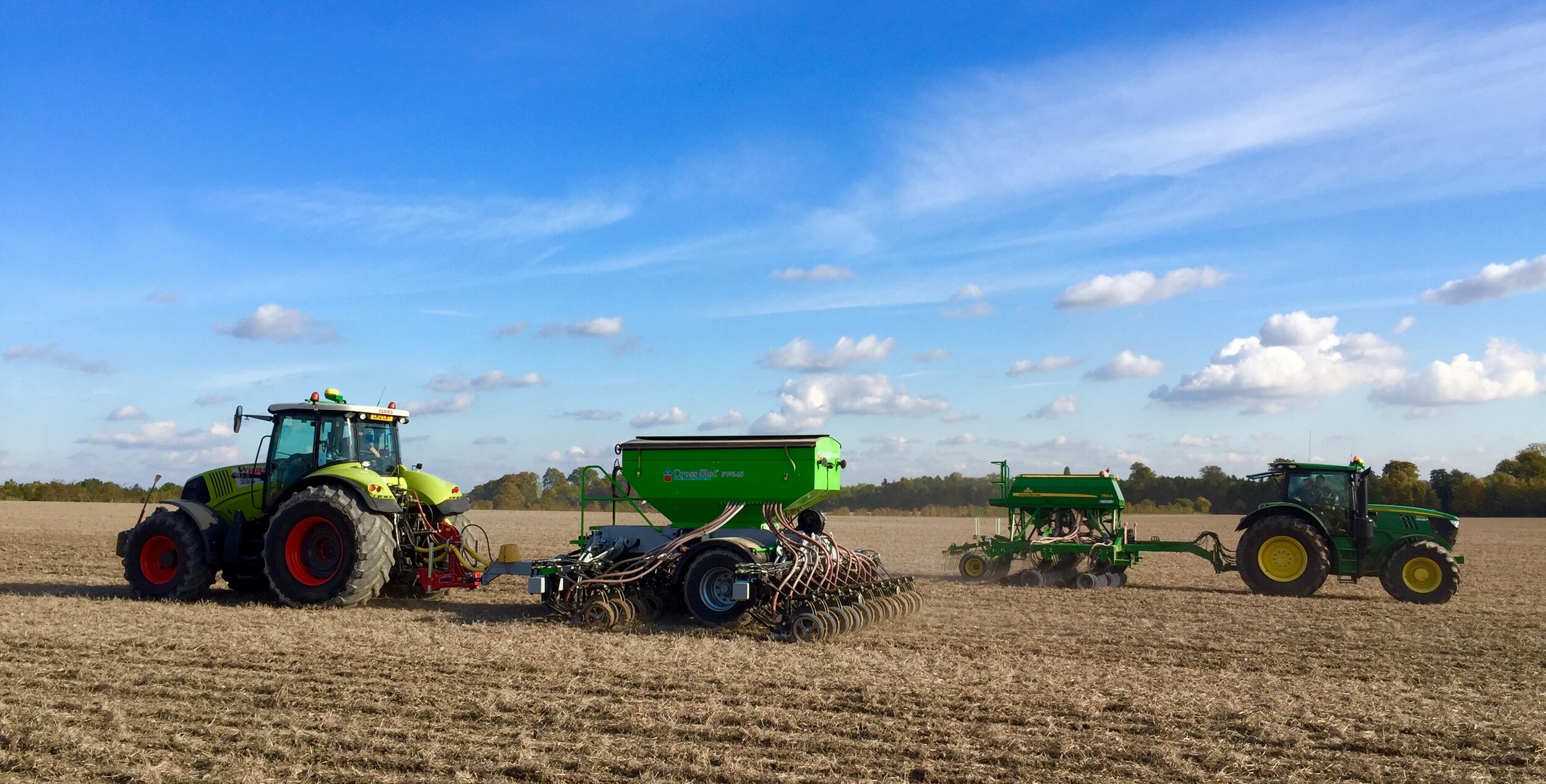 Over the following months I published updates on plant counts, tiller counts, and then finally ear counts. In the middle were some stitched drone maps, and visual analyses. In case you missed them all, here's a comprehensive list.Day 408 - Cross Slot vs 750aCS vs 750a Xmas updateCS vs 750a new year updateCS vs 750a early spring updateCross Slot vs 750a super spring special750a vs CS May dataCS vs 750a June UpdateCS vs 750a: The Penultimate Post?Anyway...harvest is almost done here now, we are just waiting for the spring beans and spring linseed to be ready. All the wheat is done, it was a rather disappointing year, with an average yield of 9.1t/ha, slightly below our long term average. The two fields which looked worst all year, both growing Reflection wheat, actually ended up yielding the best. One of them was this field, with a final result of 10.41t/ha. Incidentally, the other field, drilled three weeks earlier, yielded 10.73t/ha.The Boring BitOf course, it would have been stupid to go to all this trouble, and then not get an accurate yield from the different drill areas. So that ruled out using our combine, and our kind neighbours at KWS came to the rescue with a plot combine.
Over the following months I published updates on plant counts, tiller counts, and then finally ear counts. In the middle were some stitched drone maps, and visual analyses. In case you missed them all, here's a comprehensive list.Day 408 - Cross Slot vs 750aCS vs 750a Xmas updateCS vs 750a new year updateCS vs 750a early spring updateCross Slot vs 750a super spring special750a vs CS May dataCS vs 750a June UpdateCS vs 750a: The Penultimate Post?Anyway...harvest is almost done here now, we are just waiting for the spring beans and spring linseed to be ready. All the wheat is done, it was a rather disappointing year, with an average yield of 9.1t/ha, slightly below our long term average. The two fields which looked worst all year, both growing Reflection wheat, actually ended up yielding the best. One of them was this field, with a final result of 10.41t/ha. Incidentally, the other field, drilled three weeks earlier, yielded 10.73t/ha.The Boring BitOf course, it would have been stupid to go to all this trouble, and then not get an accurate yield from the different drill areas. So that ruled out using our combine, and our kind neighbours at KWS came to the rescue with a plot combine. What we decided to do, after consultation with the trials experts, was cut six strips for each drill, at each end of the field. We took three each from the boundary of each drill's plot, so we could compare them directly with a different drill only a couple of meters away. I think it's easier to make a picture actually:
What we decided to do, after consultation with the trials experts, was cut six strips for each drill, at each end of the field. We took three each from the boundary of each drill's plot, so we could compare them directly with a different drill only a couple of meters away. I think it's easier to make a picture actually: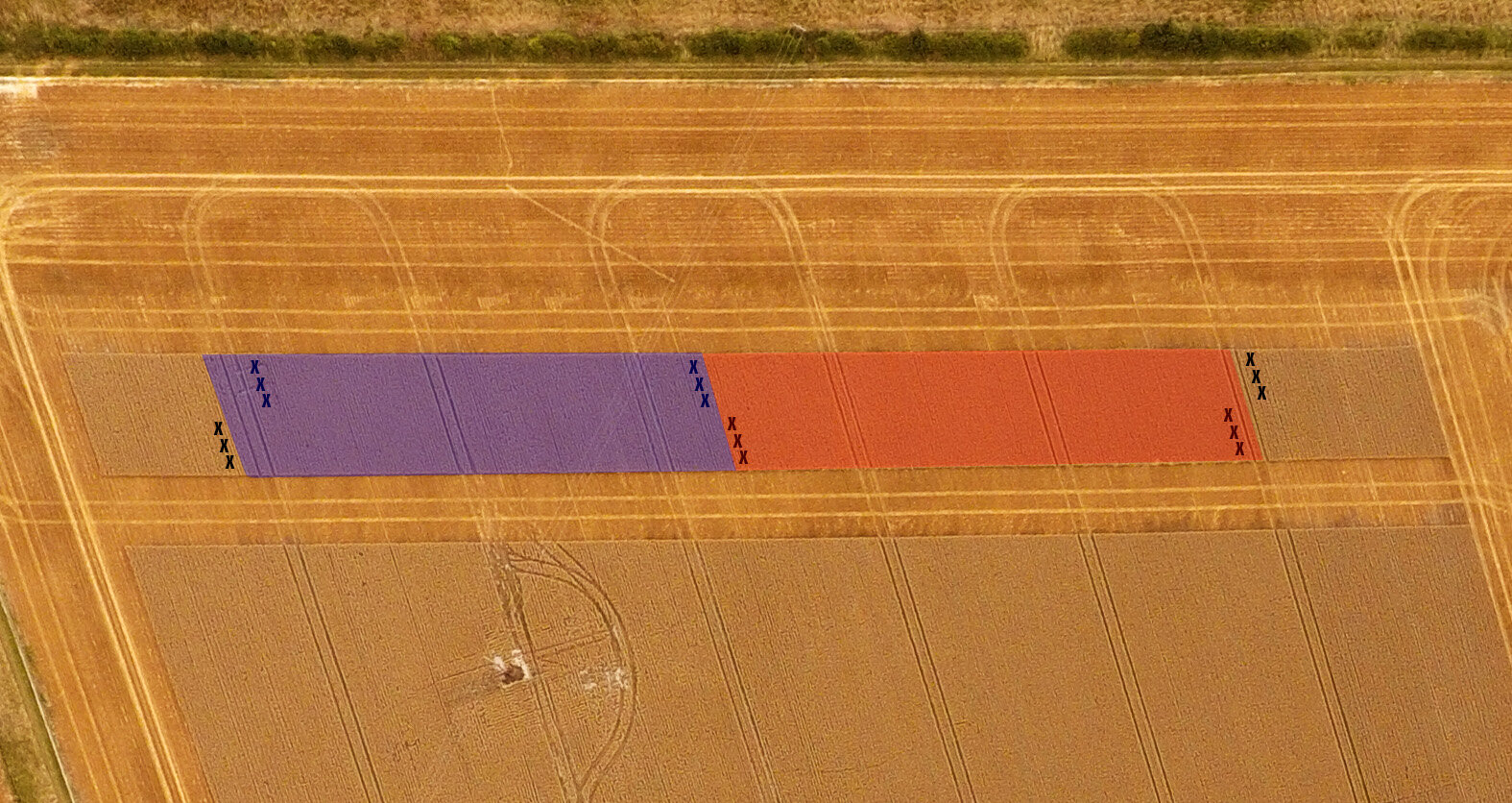 Obviously we did not cut any tramlines, and all the plots were either 10 or 12m long, and 1.5m wide. The same method was used on both the light and heavy end of the field, giving us 12 plots per drill, and 36 in total. I did end up moving the heavy plots up the field by around 100m to get out of the black grass, which could have affected the data. The combine measures weight, moisture and bushel weight. All yields were corrected to 15% moisture.
Obviously we did not cut any tramlines, and all the plots were either 10 or 12m long, and 1.5m wide. The same method was used on both the light and heavy end of the field, giving us 12 plots per drill, and 36 in total. I did end up moving the heavy plots up the field by around 100m to get out of the black grass, which could have affected the data. The combine measures weight, moisture and bushel weight. All yields were corrected to 15% moisture.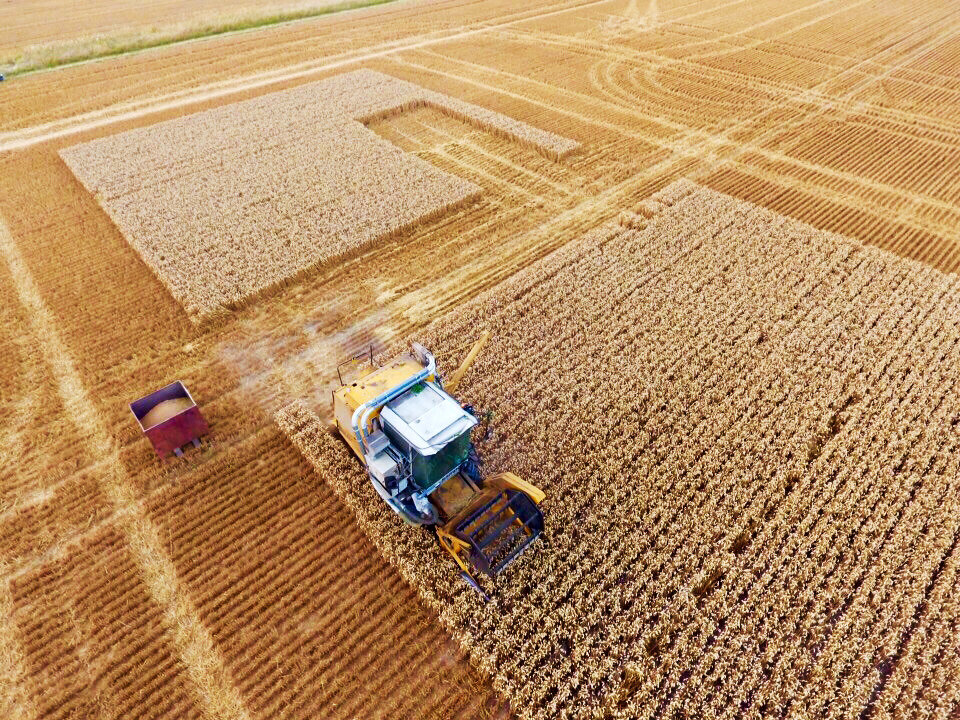 The Interesting BitWe all know from watching Who Wants To Be A Millionaire that the wisdom of crowds is infallible. So when I made a Twitter poll to see what people thought the results were going to be in this experiment, I was not surprised at what came out of it:
The Interesting BitWe all know from watching Who Wants To Be A Millionaire that the wisdom of crowds is infallible. So when I made a Twitter poll to see what people thought the results were going to be in this experiment, I was not surprised at what came out of it: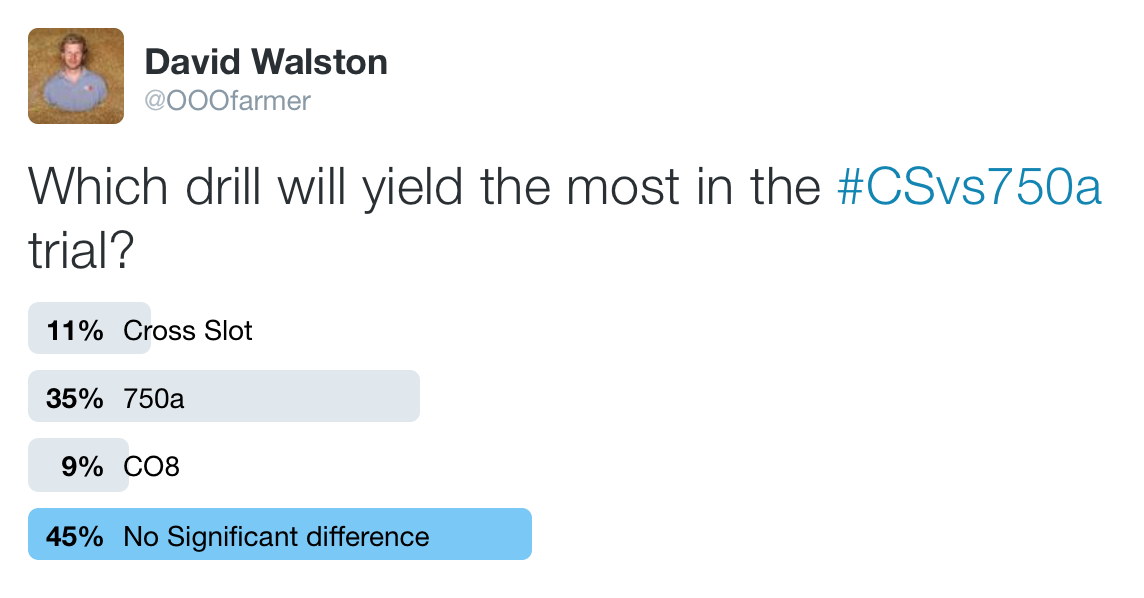 But the crowd is wrong. Because yes, that deafening sound you can hear really is the STATISTICALLY SIGNIFICANT RESULT klaxon. Let's cut to the chase, so everyone who doesn't want to read on can go home:
But the crowd is wrong. Because yes, that deafening sound you can hear really is the STATISTICALLY SIGNIFICANT RESULT klaxon. Let's cut to the chase, so everyone who doesn't want to read on can go home:
The 750a produced statistically significantly higher yields than the other two drills
At the end of this post I will put an appendix with all the data, so anyone who has too much time (I'm looking at you Sills) can do whatever they want with it. For now though, here is a summary.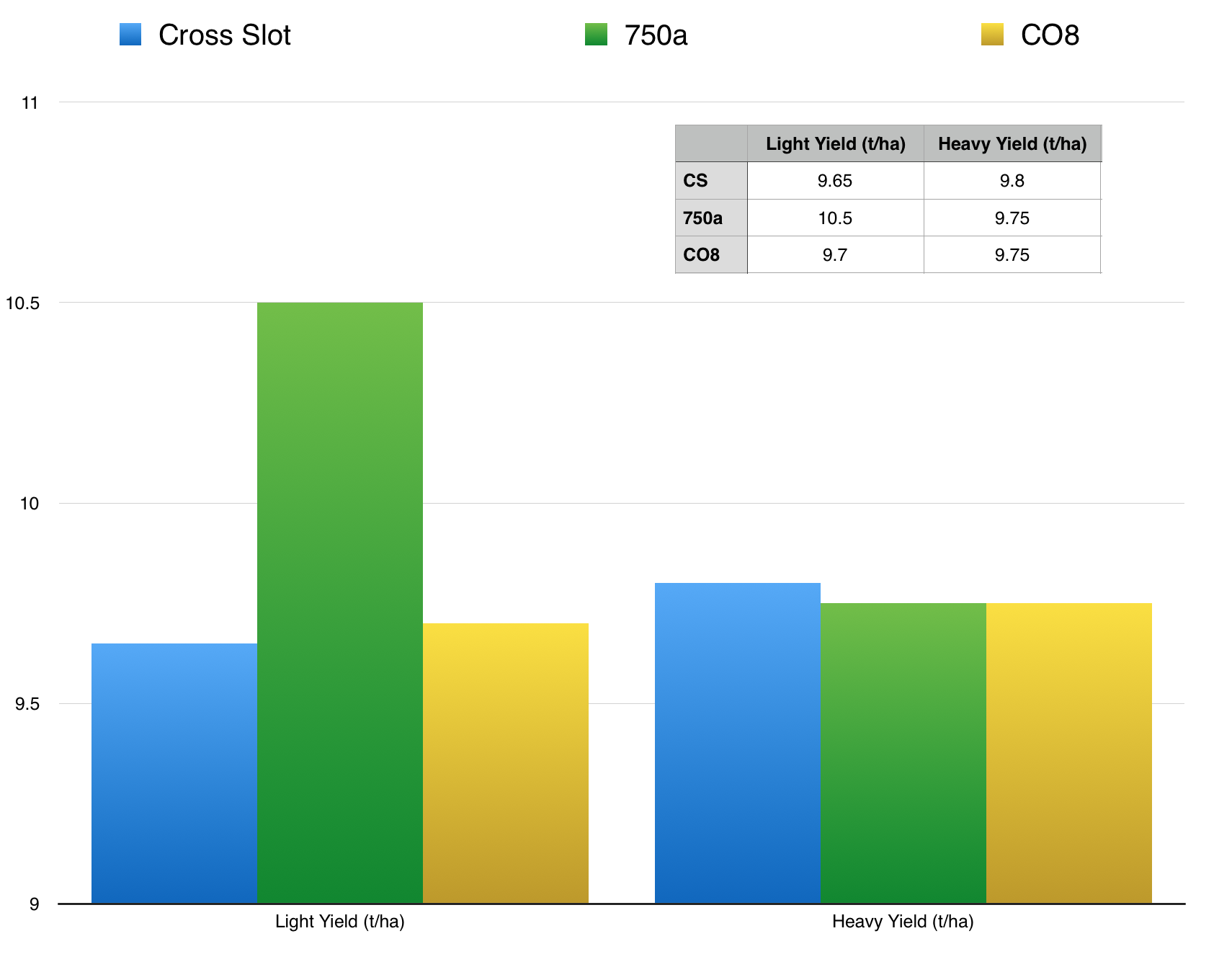 Clearly there is a big difference between what happened at the light end vs the heavy end of the field. Not surprisingly, there is no significant difference at the heavy end between the drills. At the light end it is a very different story, with the 750a yielding around 0.8t/ha more than the other two drills. If we talk about just the top end, the result is highly significant, with p<0.001. For those people like me who have forgotten their A level maths, this means that there is a less than one in a thousand chance of the results being from coincidence rather than an actual effect.When we combine both the results from both the light and heavy parts of the field, we find the 750a has a yield benefit of 0.4t/ha. This is still statistically significant, with p=0.023, meaning there is roughly a one in forty chance the results are coincidental. [For reference, anything with a p value of less than 0.05 is considered to be statistically significant]. It is this result which leads me to the conclusion I wrote at the start of this section, which is that the 750a has produced significantly higher yields.The other data that came out of the experiment was the bushel weight for each sample. In short, there is no correlation between drills or yields and bushel weights. Here's a pretty scatter diagram. You'll find a statistical analysis of drill vs bushel weight at the end.
Clearly there is a big difference between what happened at the light end vs the heavy end of the field. Not surprisingly, there is no significant difference at the heavy end between the drills. At the light end it is a very different story, with the 750a yielding around 0.8t/ha more than the other two drills. If we talk about just the top end, the result is highly significant, with p<0.001. For those people like me who have forgotten their A level maths, this means that there is a less than one in a thousand chance of the results being from coincidence rather than an actual effect.When we combine both the results from both the light and heavy parts of the field, we find the 750a has a yield benefit of 0.4t/ha. This is still statistically significant, with p=0.023, meaning there is roughly a one in forty chance the results are coincidental. [For reference, anything with a p value of less than 0.05 is considered to be statistically significant]. It is this result which leads me to the conclusion I wrote at the start of this section, which is that the 750a has produced significantly higher yields.The other data that came out of the experiment was the bushel weight for each sample. In short, there is no correlation between drills or yields and bushel weights. Here's a pretty scatter diagram. You'll find a statistical analysis of drill vs bushel weight at the end.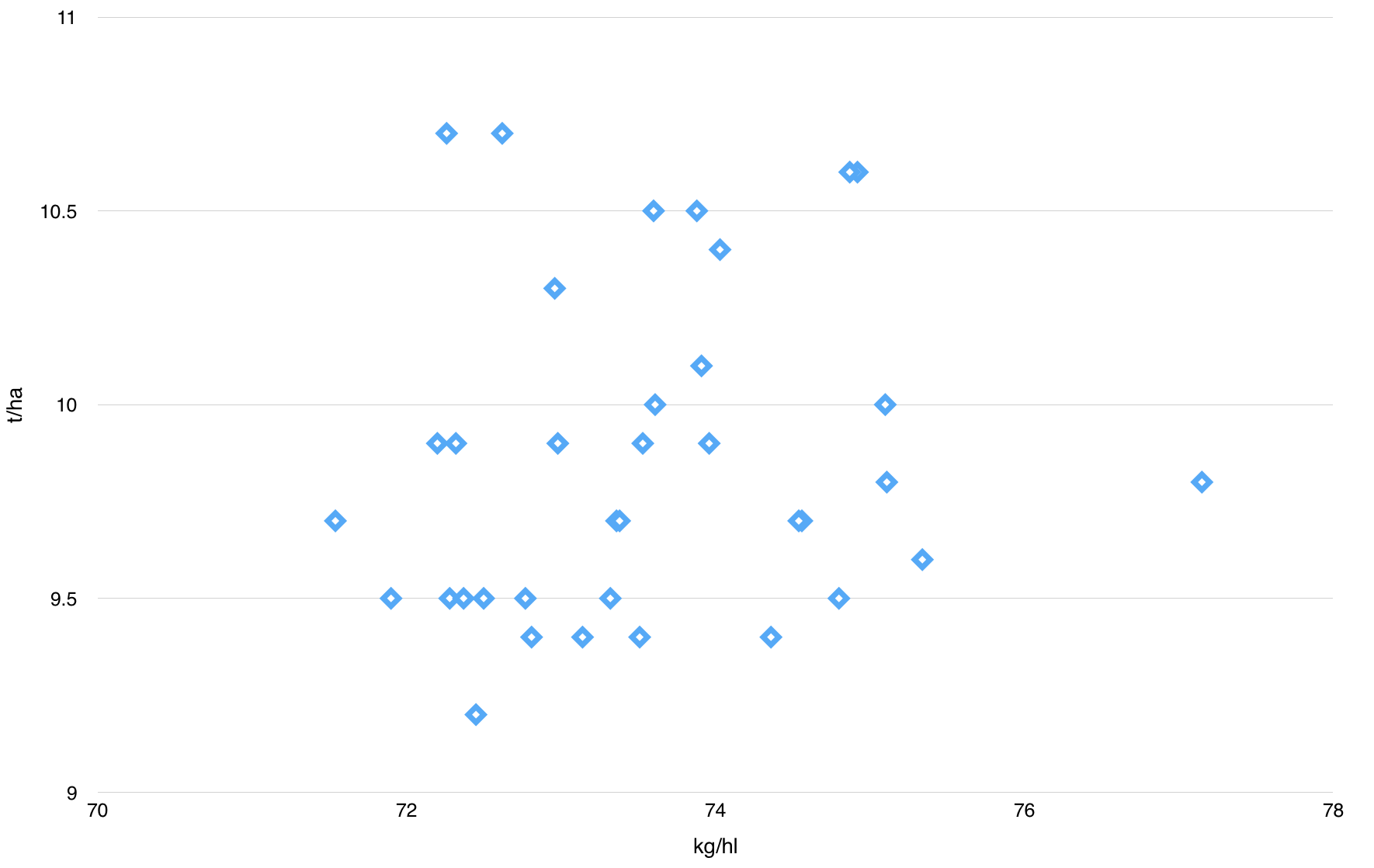 What this all meansI think the first thing to point out is that these results are from one season, in one field, growing one variety on one (maybe two) soil types. What I'm saying is that they are by no means the definitive "answer". However, I'm not aware of any other trial that put these two drills up against each other in a fully no-till situation. Certainly there is not one that has been done in UK conditions. So for now it is as good as we have got.I do wonder what has actually caused the yield difference. For me it can only be one of two things. Firstly there is row width - which was significantly narrower on the 750a than the other two drills. Secondly there is establishment and plant populations. The 750a did much better on these numbers; I suspect they would be statistically significant, but the analysis hasn't been done yet. I think though that once a seed is in the ground at the correct depth, and has germinated, any effect from the drill is finished. On that criteria, the 750a has clearly performed the best.Where does that leave the Cross Slot? As I outlined in the first blog post, it is much more expensive to buy than a 750a, at around 2.5-3x the price per meter of drill - for much wider row spacing. If you felt that this was a problem then it is possible to go closer, but it will cost even more and take more pulling. The running costs also seem to be much higher as well. All of this pales into insignificance if a higher yield can be achieved, but...I do not believe for one second that in every year in every situation this result would be repeated. What I do believe to be more likely is that sometimes the 750a would win, sometimes a Cross Slot (although possibly the row spacings would need to be matched to even things up fully). That's all nice, but I can't see the point in paying a lot more money to not get a performance increase.
What this all meansI think the first thing to point out is that these results are from one season, in one field, growing one variety on one (maybe two) soil types. What I'm saying is that they are by no means the definitive "answer". However, I'm not aware of any other trial that put these two drills up against each other in a fully no-till situation. Certainly there is not one that has been done in UK conditions. So for now it is as good as we have got.I do wonder what has actually caused the yield difference. For me it can only be one of two things. Firstly there is row width - which was significantly narrower on the 750a than the other two drills. Secondly there is establishment and plant populations. The 750a did much better on these numbers; I suspect they would be statistically significant, but the analysis hasn't been done yet. I think though that once a seed is in the ground at the correct depth, and has germinated, any effect from the drill is finished. On that criteria, the 750a has clearly performed the best.Where does that leave the Cross Slot? As I outlined in the first blog post, it is much more expensive to buy than a 750a, at around 2.5-3x the price per meter of drill - for much wider row spacing. If you felt that this was a problem then it is possible to go closer, but it will cost even more and take more pulling. The running costs also seem to be much higher as well. All of this pales into insignificance if a higher yield can be achieved, but...I do not believe for one second that in every year in every situation this result would be repeated. What I do believe to be more likely is that sometimes the 750a would win, sometimes a Cross Slot (although possibly the row spacings would need to be matched to even things up fully). That's all nice, but I can't see the point in paying a lot more money to not get a performance increase.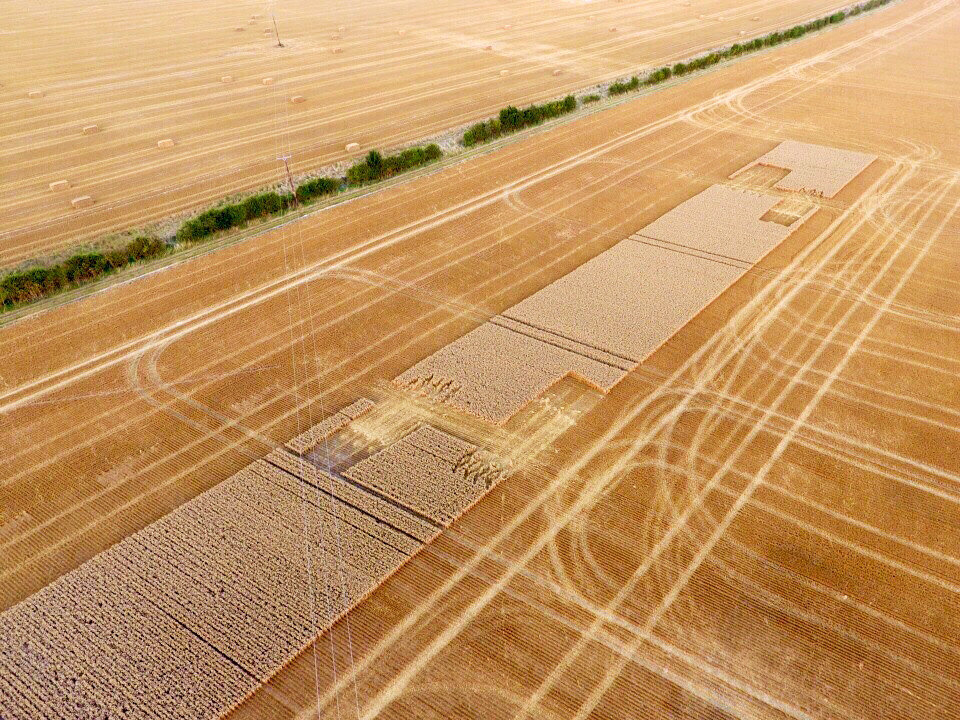 There are of course some USPs to a Cross Slot. They are very well built, and will no doubt last a long time. The ground I saw in NZ was amazing, with huge boulders not an uncommon sight. Our farm, though, is real boys land in comparison. Our current drill is 16 years old and still in great shape. A second USP is the very large, 50cm, range of vertical travel for the coulters. Again, great on the rough NZ pastures, but not something we need. As for the whole point of the Cross Slot opener, which puts the seed in a high humidity slot - I have no reason to doubt that it happens. But how often is a lack of moisture at establishment a problem for us? Very rarely in a no-till situation, even with a basic tine drill.So all in all, on our farm, in our conditions, I personally do not see a need for these characteristics. In the absence of any evidence of a yield benefit, I couldn't see wanting to buy a Cross Slot. This may well be different on someone else's farm in the UK, I have no idea. But spending this amount of money without trying it first in your own conditions, is in my opinion totally nuts. You pays your money and you takes your choice...And the John Deere? No doubt a good drill, it was clearly the best performing in this trial, from day one through to harvest. Is it any better than a Sumo, Weaving, or any of the others? I don't know. What it does have going for it is a proven track record and strong residuals. I can't help but feel it may be getting a bit left behind in technology though, as the design is basically unchanged in two decades. That could be a good or a bad thing depending on your preferences.So there we have it. I still can't quite believe we got a Significant result, I would not have ever predicted that. Not too bad for a farmer trial. But was it really a farmer trial? I had a lot of help: Ian for providing the Cross Slot, Huw at Ben Burgess for bringing the 750a. Christina and Robert at ProCam for spending hours counting plants, tillers and ears. John, Kim and Ed at KWS for organising the harvesting and yield measurement, and doing the stats. Thanks all.Walston Out.[PS Please do not use any of this blog or the data in it without asking first]AppendixCSvs750a Raw DataStats Analysis
There are of course some USPs to a Cross Slot. They are very well built, and will no doubt last a long time. The ground I saw in NZ was amazing, with huge boulders not an uncommon sight. Our farm, though, is real boys land in comparison. Our current drill is 16 years old and still in great shape. A second USP is the very large, 50cm, range of vertical travel for the coulters. Again, great on the rough NZ pastures, but not something we need. As for the whole point of the Cross Slot opener, which puts the seed in a high humidity slot - I have no reason to doubt that it happens. But how often is a lack of moisture at establishment a problem for us? Very rarely in a no-till situation, even with a basic tine drill.So all in all, on our farm, in our conditions, I personally do not see a need for these characteristics. In the absence of any evidence of a yield benefit, I couldn't see wanting to buy a Cross Slot. This may well be different on someone else's farm in the UK, I have no idea. But spending this amount of money without trying it first in your own conditions, is in my opinion totally nuts. You pays your money and you takes your choice...And the John Deere? No doubt a good drill, it was clearly the best performing in this trial, from day one through to harvest. Is it any better than a Sumo, Weaving, or any of the others? I don't know. What it does have going for it is a proven track record and strong residuals. I can't help but feel it may be getting a bit left behind in technology though, as the design is basically unchanged in two decades. That could be a good or a bad thing depending on your preferences.So there we have it. I still can't quite believe we got a Significant result, I would not have ever predicted that. Not too bad for a farmer trial. But was it really a farmer trial? I had a lot of help: Ian for providing the Cross Slot, Huw at Ben Burgess for bringing the 750a. Christina and Robert at ProCam for spending hours counting plants, tillers and ears. John, Kim and Ed at KWS for organising the harvesting and yield measurement, and doing the stats. Thanks all.Walston Out.[PS Please do not use any of this blog or the data in it without asking first]AppendixCSvs750a Raw DataStats Analysis
